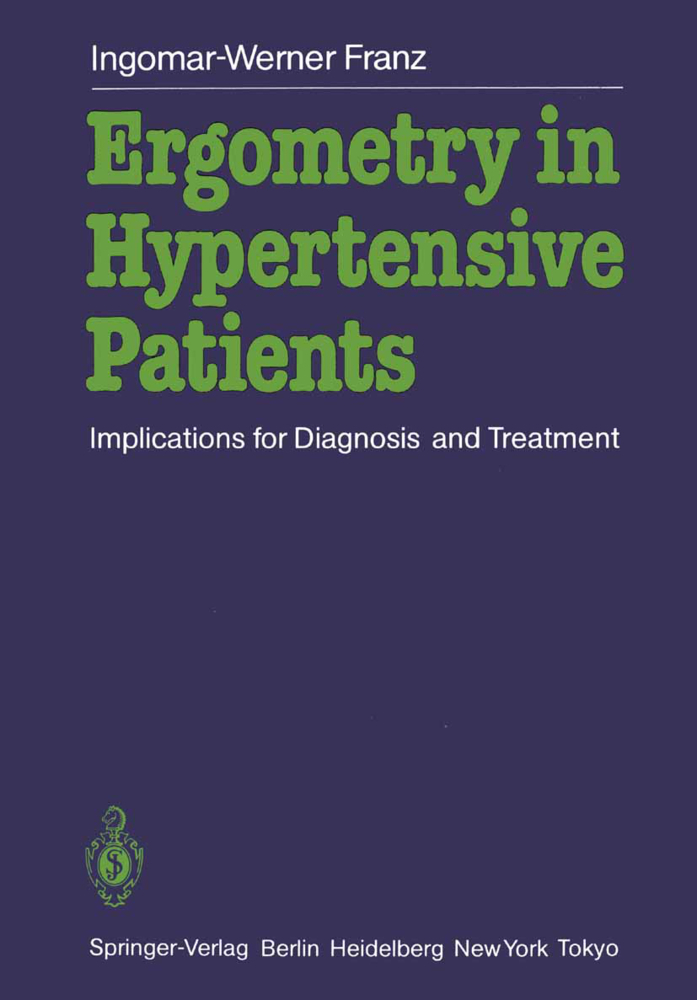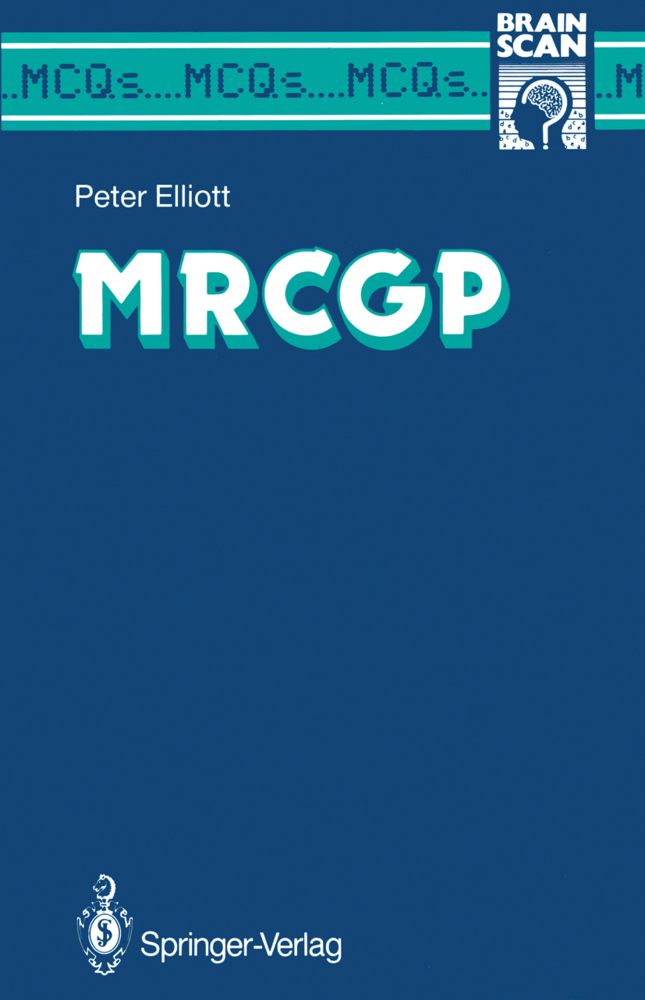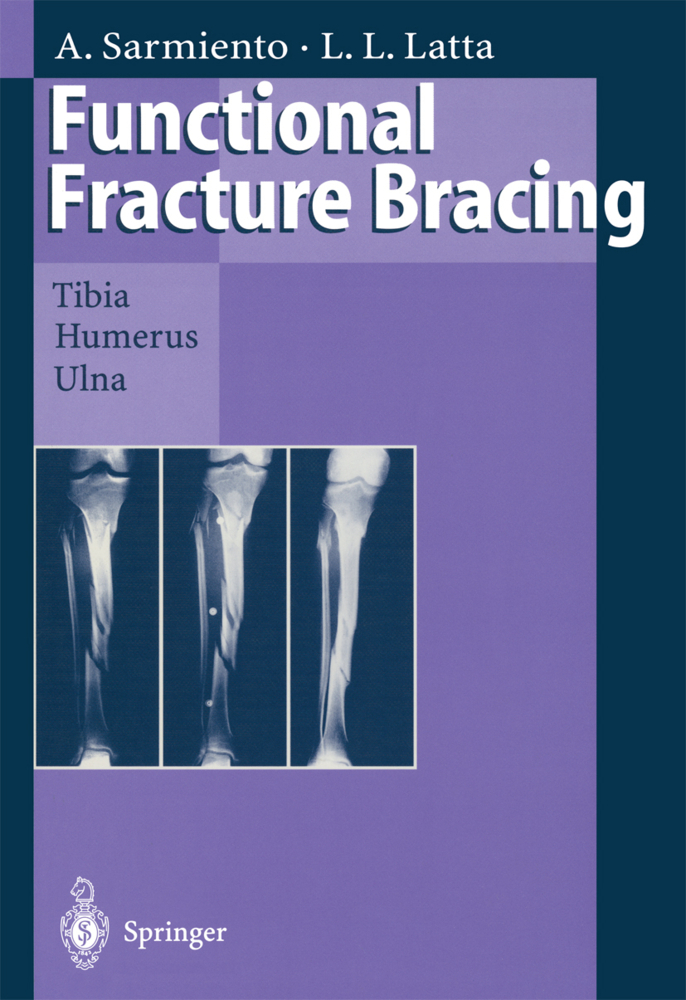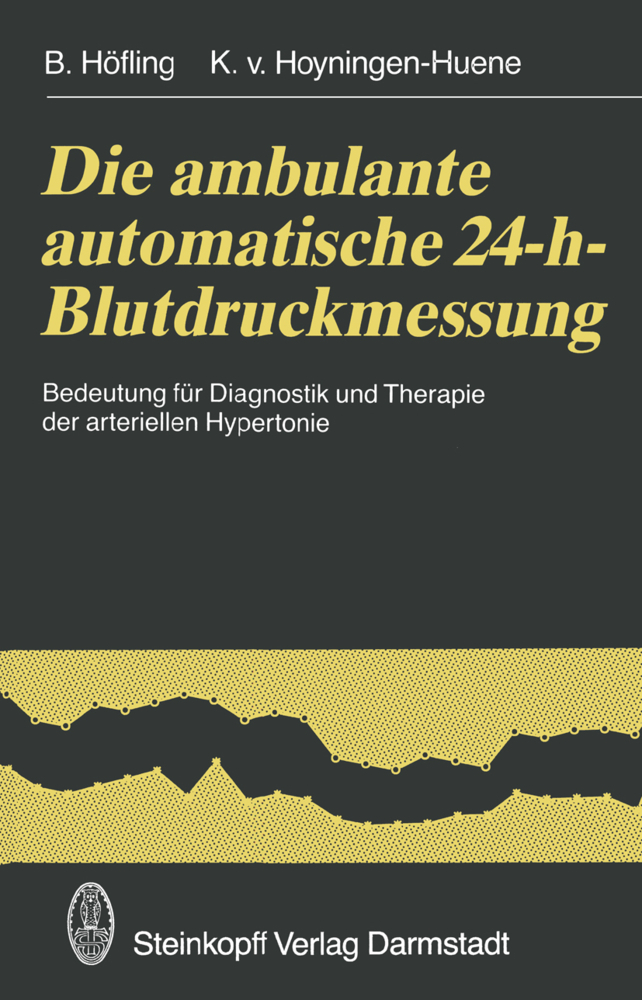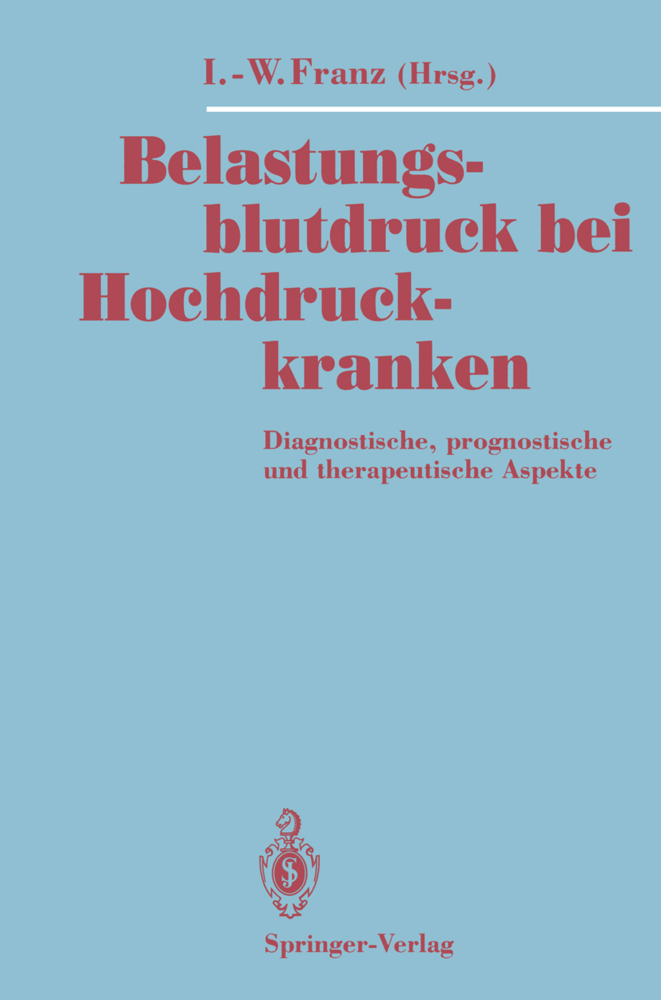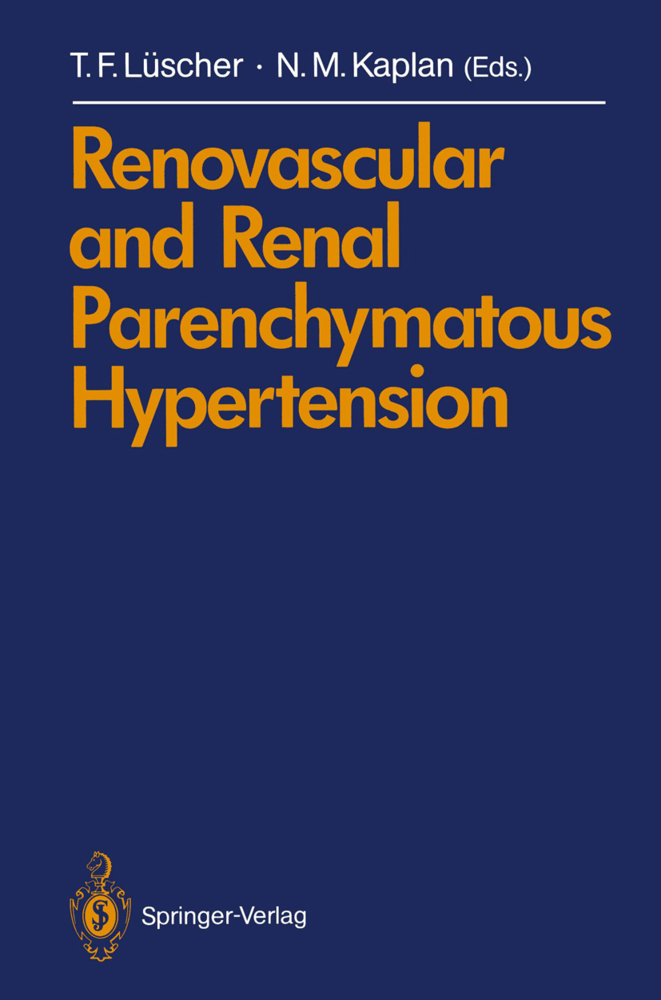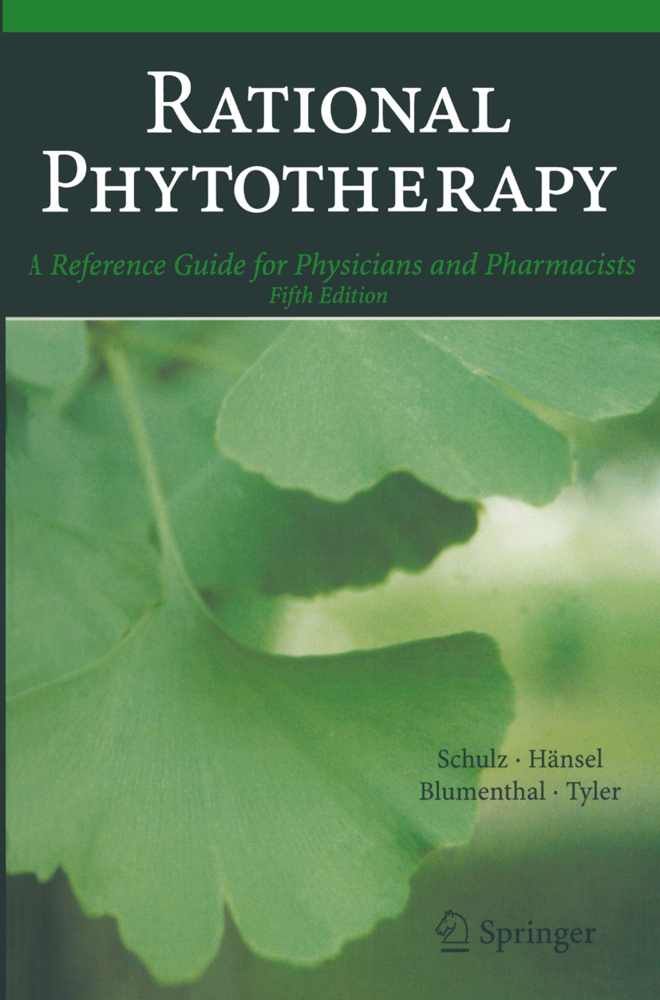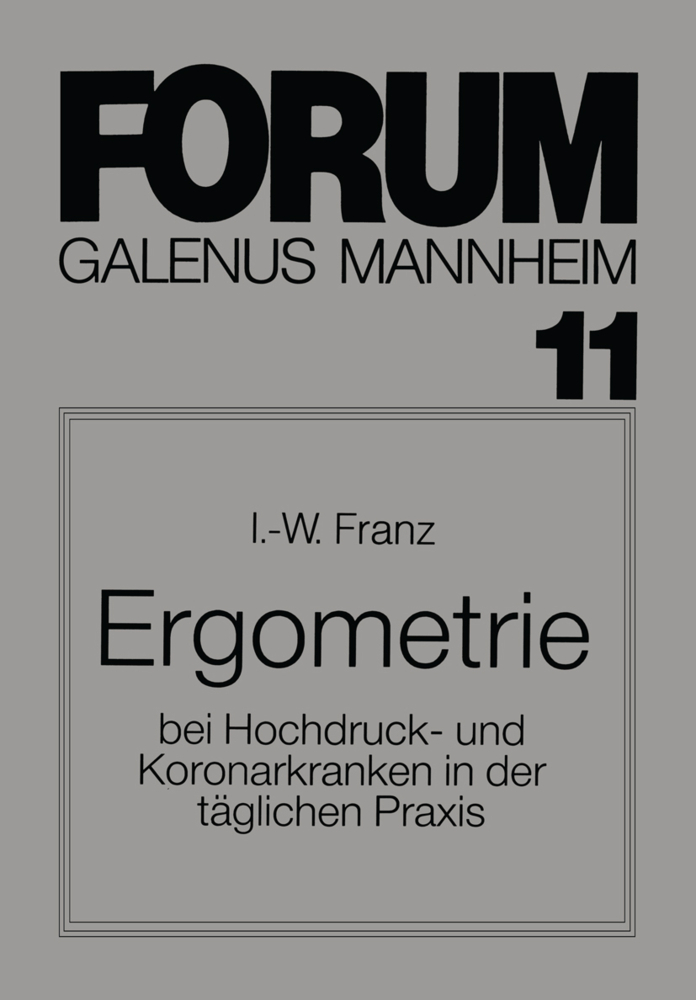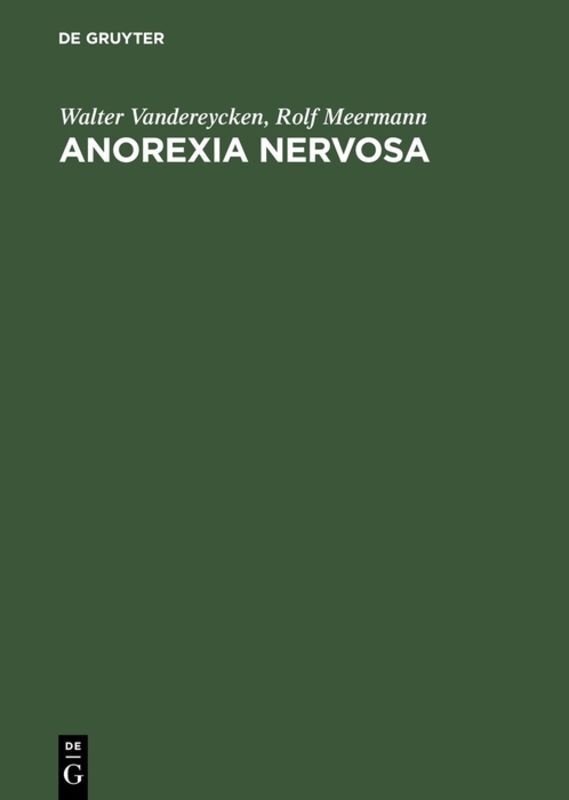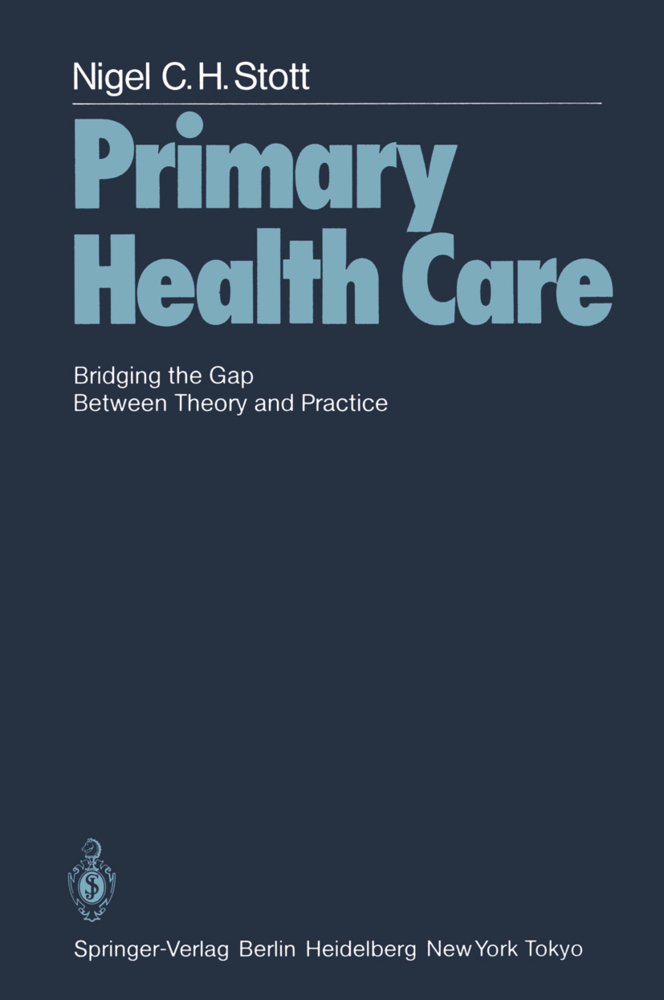Ergometry in Hypertensive Patients
Implications for Diagnosis and Treatment
Ergometry in Hypertensive Patients
Implications for Diagnosis and Treatment
Within the field of general medicine, the last two decades have seen the curative procedures increasingly supplemented by func tions that can be summed up under the heading of "preventive health care." There is a close link between this development and the changing morbidity pattern. In highly developed countries the morbidity rate attributable to infectious diseases has been much reduced, while the various types of arteriosclerosis, some tumorous conditions, and so-called functional syndromes have attained massive incidence rates. Systematic epidemiologic studies have yielded the concept of risk factors, i. e., certain exogenous and endogenous factors whose elimination, ideally, would make it possible to avoid the manifestation of an illness or to ensure it did not become mani fest until later in life or in a milder form. The socioeconomic and sociomedical significance of these aspects is considerable, as can be seen from all the statistics on the reasons for incapacity and early retirement and on the relative contributions of different ill nesses to total mortality. Effective avoidance of illnesses by primary prophylaxis (elimi nation of the causes of disease) or early detection of the symp toms of disease (secondary prophylaxis) leading to early treat ment would be a particularly significant step forward, since in the case of most of the conditions mentioned above only pallia tive forms of treatment are available, and none that have any cu rative effect.
2. Blood Pressure Measurement during Ergometry
II. Ergometry as an Aid to Diagnosis
1. Statement of Problem
2. Blood Pressure and Heart Rate Responses of Normal Individuals
3. Blood Pressure and Heart Responses of Hypertensive Patients
4. Blood Pressure and Heart Rate Responses of Borderline Hypertensives
5. Blood Pressure Increments from Rest to Exercise in Normotensives, Borderline Hypertensives and Hypertensives
6. Blood Pressure and Heart Rate Responses of Elderly Hypertensives
7. Ergometry for Assessing the Myocardial Oxygen Consumption and Cardiocorporeal Performance Capacity of Hypertensive Patients
III. Ergometry as an Aid to Patient Management
1. Importance of Exercise Blood Pressures as a Vascular Risk Factor
2. The Control of Excessive Blood Pressures under Stress
3. Antihypertensive Effect of Beta-Blocking Drugs
4. Antihypertensive Effect of Diuretics Compared with Beta-Blocking Drugs and Their Combinations
5. Antihypertensive Effect of Vasodilators Compared with Betablockers and Their Combinations
6. Summary and Conclusions Regarding Beta Blockers, Diuretics and Vasodilators
7. Beta-Blocking Drugs and Diuretics for the Treatment of Hypertension in the Elderly
8. Antihypertensive Effect of Weight Reduction and Endurance Training
IV. References
V. Subject Index.
I. Methodology
1. Principles of Ergometry2. Blood Pressure Measurement during Ergometry
II. Ergometry as an Aid to Diagnosis
1. Statement of Problem
2. Blood Pressure and Heart Rate Responses of Normal Individuals
3. Blood Pressure and Heart Responses of Hypertensive Patients
4. Blood Pressure and Heart Rate Responses of Borderline Hypertensives
5. Blood Pressure Increments from Rest to Exercise in Normotensives, Borderline Hypertensives and Hypertensives
6. Blood Pressure and Heart Rate Responses of Elderly Hypertensives
7. Ergometry for Assessing the Myocardial Oxygen Consumption and Cardiocorporeal Performance Capacity of Hypertensive Patients
III. Ergometry as an Aid to Patient Management
1. Importance of Exercise Blood Pressures as a Vascular Risk Factor
2. The Control of Excessive Blood Pressures under Stress
3. Antihypertensive Effect of Beta-Blocking Drugs
4. Antihypertensive Effect of Diuretics Compared with Beta-Blocking Drugs and Their Combinations
5. Antihypertensive Effect of Vasodilators Compared with Betablockers and Their Combinations
6. Summary and Conclusions Regarding Beta Blockers, Diuretics and Vasodilators
7. Beta-Blocking Drugs and Diuretics for the Treatment of Hypertension in the Elderly
8. Antihypertensive Effect of Weight Reduction and Endurance Training
IV. References
V. Subject Index.
Franz, Ingomar W.
Schölmerich, P.
Telger, Terry
| ISBN | 978-3-642-70374-4 |
|---|---|
| Artikelnummer | 9783642703744 |
| Medientyp | Buch |
| Copyrightjahr | 2012 |
| Verlag | Springer, Berlin |
| Umfang | XVIII, 228 Seiten |
| Abbildungen | XVIII, 228 p. |
| Sprache | Englisch |

